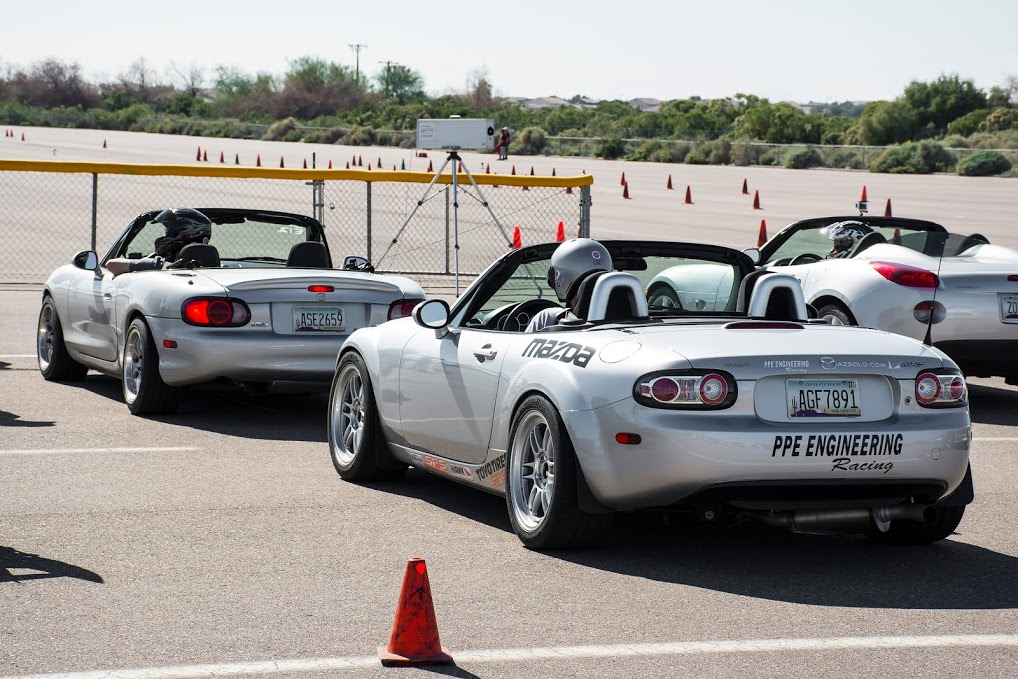
It seemed as though a void needed to be filled after MG sold its last MGB in 1980, Triumph was put to rest in 1981, and the Fiat 124 Spider was quick to follow in 1985. The only four-cylinder, front-engine, two-seater sports car that remained was the Alfa Romeo Spider, which wasn’t exactly the most popular car on the road. Mazda took advantage of this void.
Arguably a classic already as the earliest of these cars is 25 years old, Mazda Miata reigns as one of the most revered roadsters of recent times and is quickly approaching legend status. Why? Well, it all started back in 1979…
Bob Hall was working for Automotive News, and he was asked by Mazda’s managing director what type of cars Mazda should be building. His answer was, “A small open two-seater.” It’s debatable whether that conversation led to the Miata, but here’s a hard fact: Hall went to work for Mazda two years later as the product planner on the Miata development team. Some accept Bob Hall as the father of the Miata. While the story is widely circulated as truthful, there isn’t really much hard evidence to support it.

Introduced in the summer of 1989 as an early 1990 model, the Miata was a crowd pleaser from the start, partially due to its modest base price of $13,800.
So what did you get with the earliest of the Miata? The car had an 89.2-inch wheelbase and stretched to 155.2 inches overall. Power steering was optional, but the standard manual rack-and-pinion setup reacted instinctively to steering inputs and gave the driver feedback, including the subtle details about what was going on with tires. The four-wheel disc brakes weren’t very big, and the options list was small, including a limited-slip differential and air conditioning.
Weighing in at 2,116 pounds in base trim, the Miata had spot-on balance and a 1.6-liter, dual-overhead cam, four-cylinder motor pushing out 116 horsepower. The Miata went from zero to 60 mph in just under nine seconds and completed the quarter mile in 16.8 seconds, crossing the finish line around 80 mph. The Miata wasn’t a rocket, but it was fast enough and light enough to be entertaining. Want to buy one of these today? The Hagerty price guide has good condition Miata’s going for around $10,000 dollars with a steady price increase.
After having sold 35,944 Miatas during 1990, Mazda didn’t want to mess with success. The 1991 to 1997 Mazda went nearly unchanged with the exceptions of a few added extras over the years. This included anti-lock brakes and a four-speed automatic transmission, a “sensory” sound system was added as well as a new corporate logo on the nose of the car were added to the option list.
What has since become a Miata tradition, the Special Edition first came about in 1991, sporting a coat of British Racing Green, tan leather upholstery, a tan tonneau cover, a wood shift knob, air-conditioning, limited-slip-differential, stainless-steel sill plates and a CD player. Only 4,000 of the Special Editions were made.

In 1994 Mazda increased the engine size to 1.8-liters, giving the mighty Miata a staggering 128 horsepower. The first M Edition made an appearance as well as the R Package. The R Package was geared towards the hardcore racing enthusiasts and featured a Torsen limited-slip differential, alloy wheels, Bilstein shocks, recalibrated springs, sway bars, and everyone’s favorite: racing strips.
With the U.S. Government emissions regulations evolving, the 1996 Miata received a new engine-control computer, and was able to add another impressive five horsepower, bumping the motor up to a grand total of 133.
The years 1997 and 1998 saw the last of the pop-up-headlight models. The existing Miata made its way through ‘97. Only 47 drivers opted for the competition oriented R Package this year.
The 1998 year was null and void as all Miata’s produced in ’98 are considered late-delivery ’97s.
The beginning of the second-generation Miata happened in 1999 as the Miata was redesigned without pop-up headlights and went with a flush look until 2006 when the third and current generation of Miata was produced.
Though still relatively inexpensive, first-generation Miatas have seen steady price increases over the past few years, with the exception of the 1997, which recently took a slight dip. There were more than 400,000 sold through 1998, so good ones should not be hard to find. If you can locate a Special Edition Miata, prices are upwards of $15,000.





